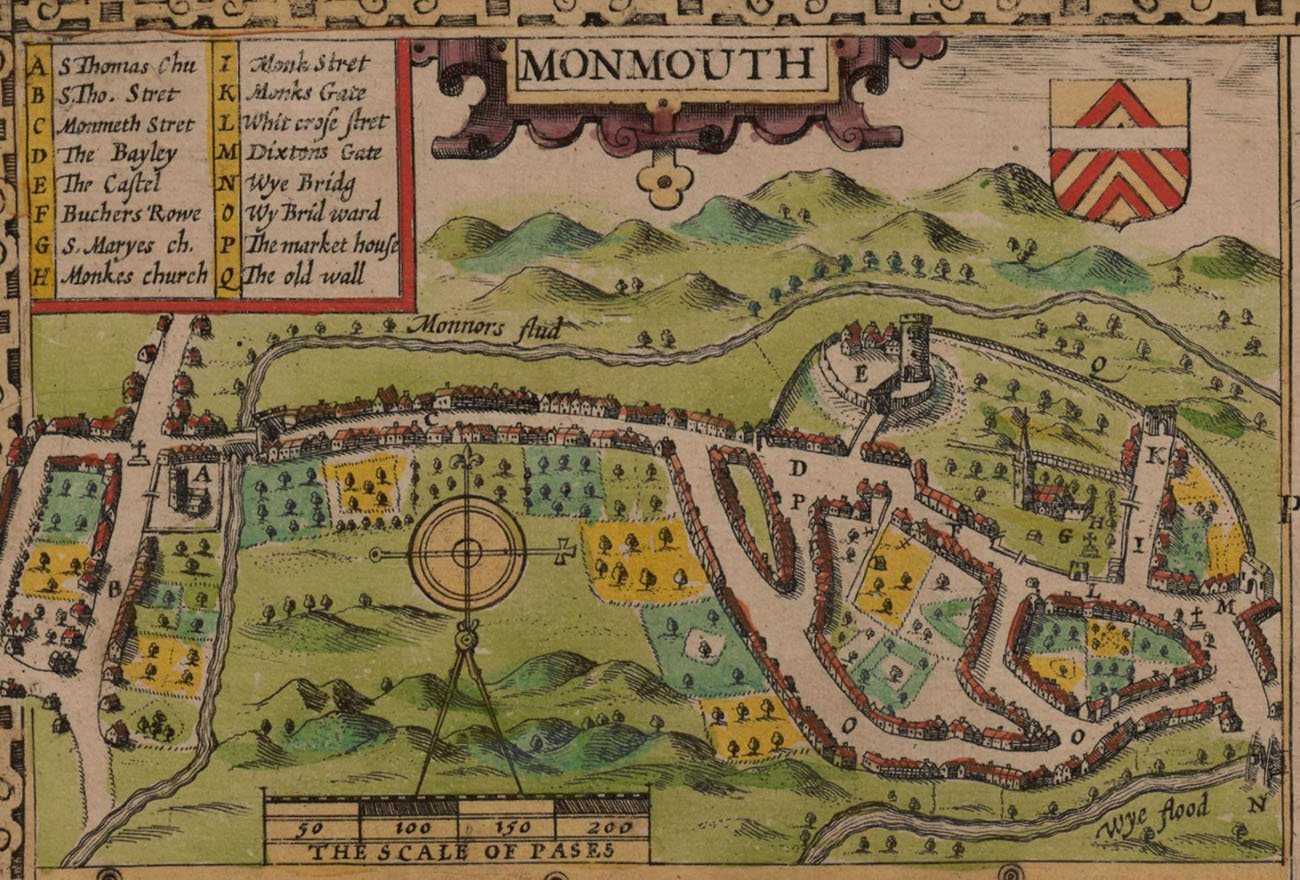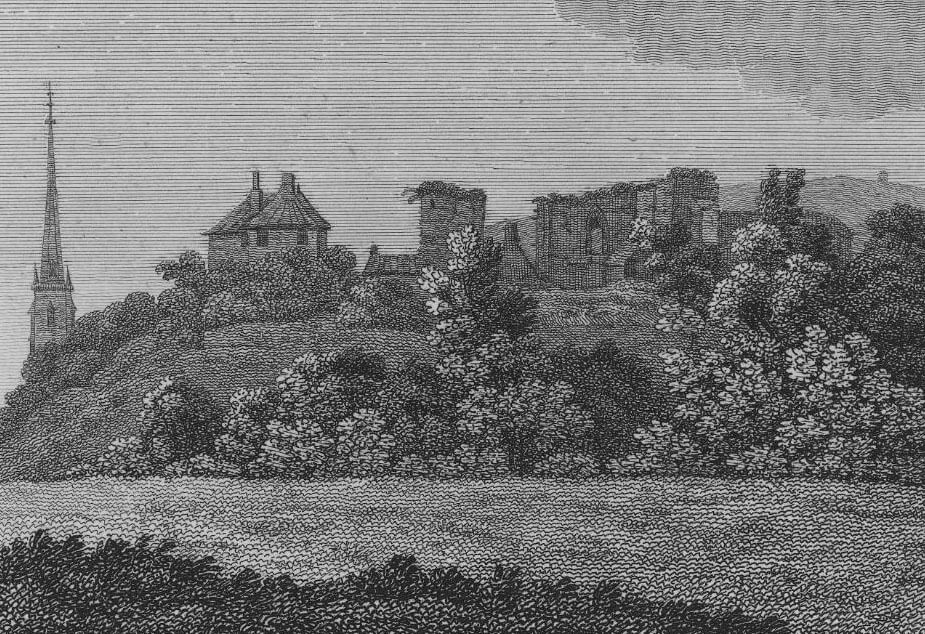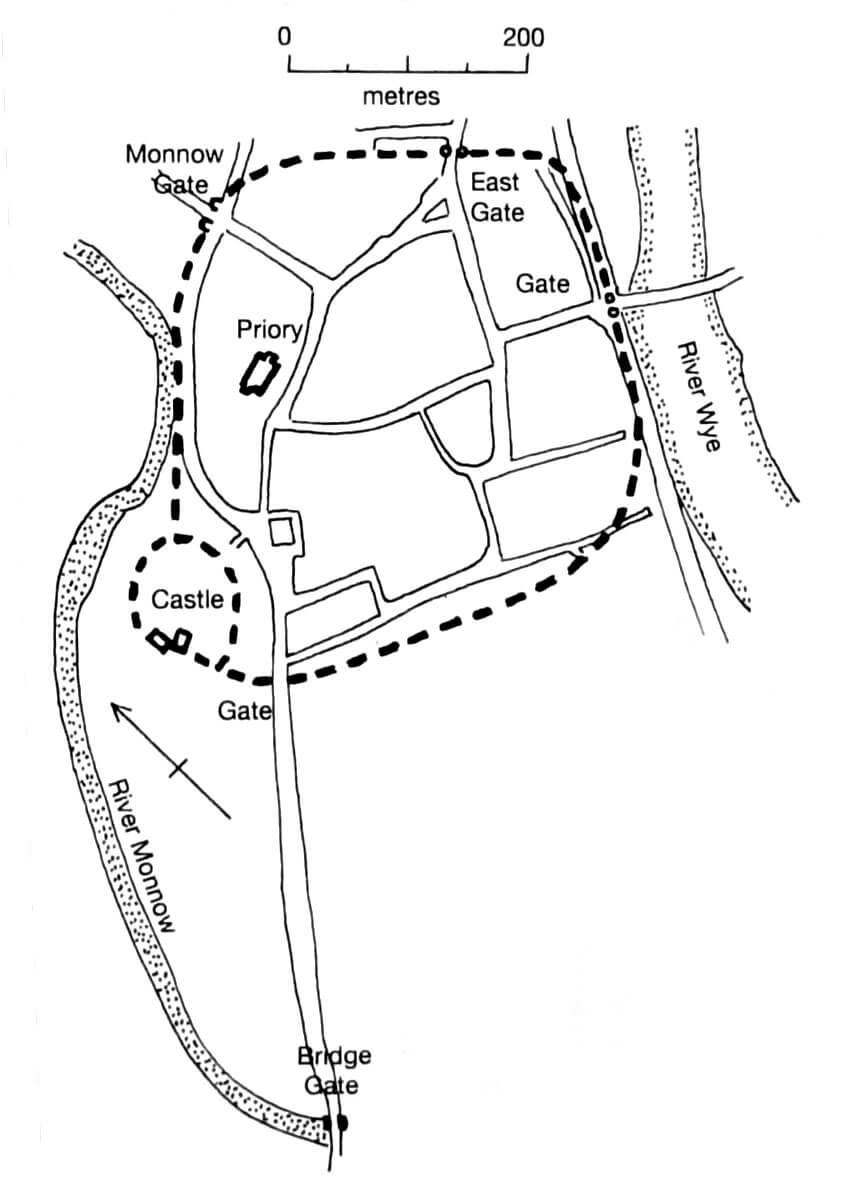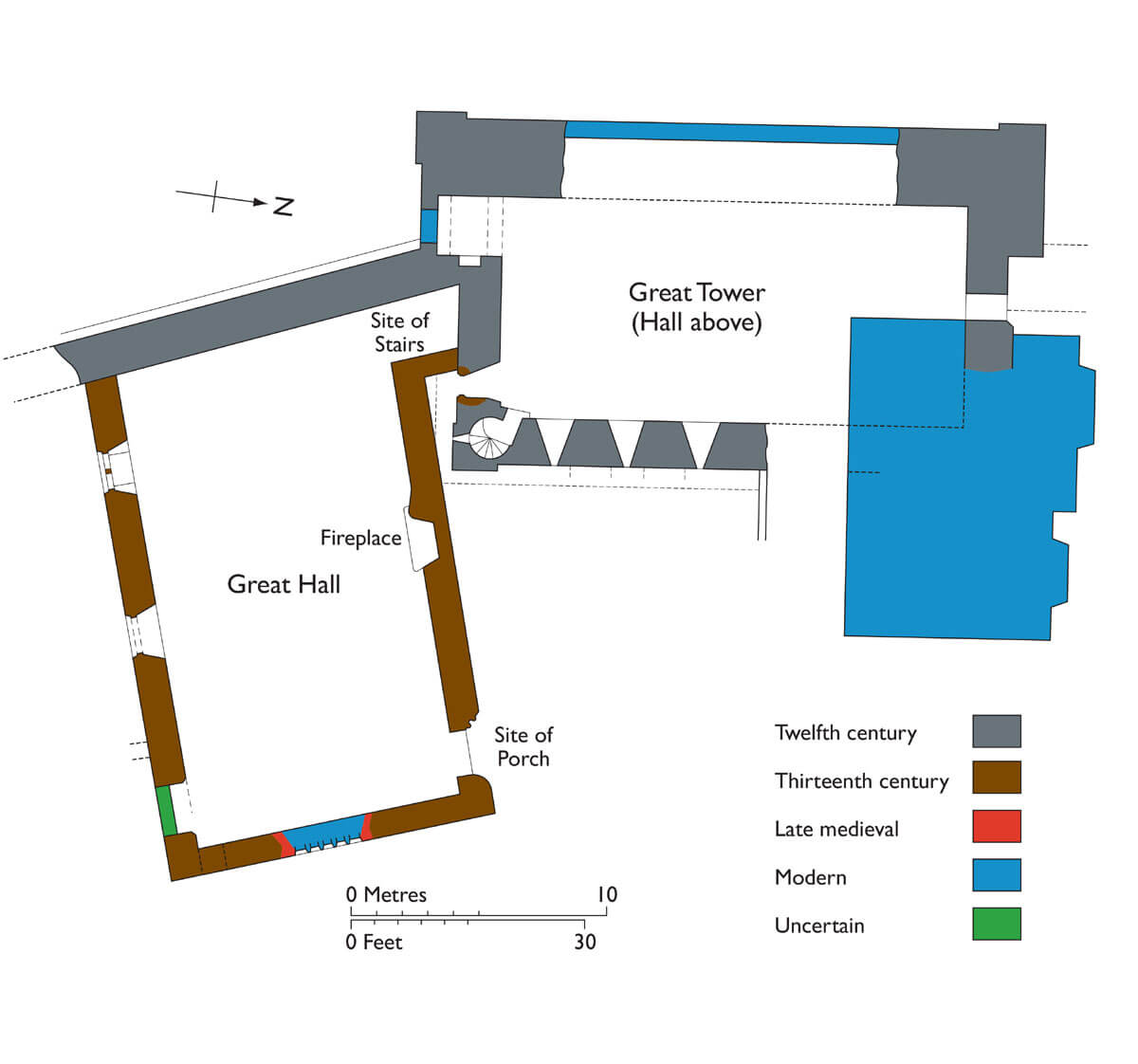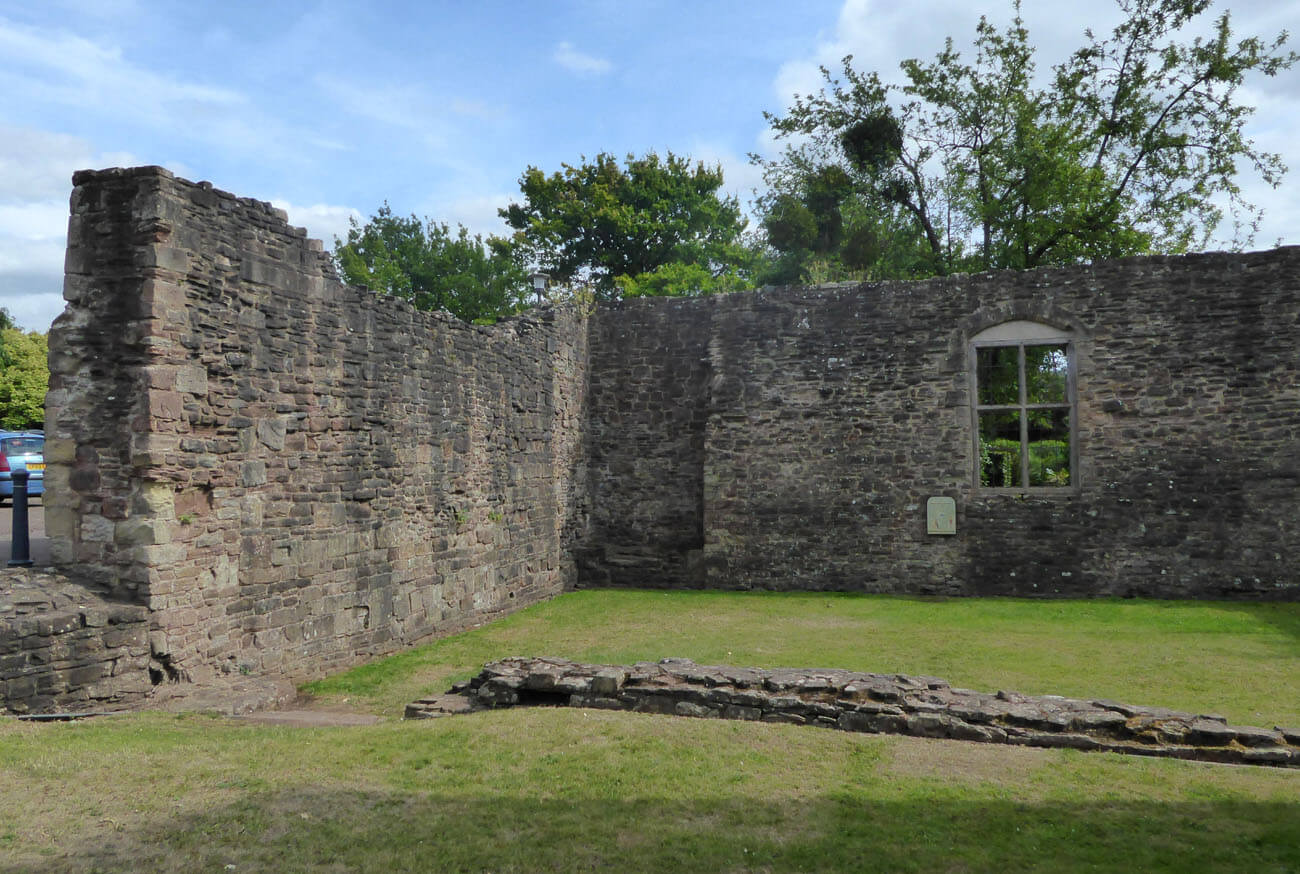History
Monmouth Castle was built by William Fitz Osbern shortly after the Norman invasion. He was one of the key supporters of William the Conqueror and played a key role in convincing the Norman barons to invade England. As a reward, the king granted him the Earldom of Hereford in 1067, which included extensive lands in the south-west region of the Midlands, making FitzOsbern able to extend Norman control to Wales as well. Timber – earth castle was erected in the years 1066-1071 to dominate the outlet of the river Monnow to the river Wye. These two waterways were important trade and communication routes that facilitated traffic throughout the region and required strong castles to protect them from the attacks of the Welsh.
William’s son, Roger de Breteuil, lost his estates in 1075 because of his participation in an anti-royal rebellion. After its suppression, William the Conqueror gave the local lordship to a certain Wilhenoc, a Breton from Dol. Around 1086 his nephew, William Fitz Baderon, and then his descendant John of Monmouth owned it. The latter had the castle briefly taken by Richard Marshal, Earl of Pembroke, during his rebellion in 1233. Perhaps this attack meant that John of Monmouth, after regaining the castle, built a large, round tower-keep around 1236. In 1256, the castle became a royal property, when it was acquired by prince Edward, later king Edward I. He held it until Simon de Montfort won it in 1264, during his rebellion against Henry III. The king, whom Montfort captured at the Battle of Lewes, was briefly detained in Monmouth as a prisoner. The rebellion was finally suppressed the following year, and the castle returned to the Crown. Henry III then granted the castle to his younger son, Edmund Crouchback, as part of the land he was given when he became Earl of Lancaster in 1267. Edmund considerably expanded the castle, including the building of the great hall.
After Edmund’s death in 1296, the castle and Lancaster Earldom was handed over to his son, Thomas. During his rule, the town walls were modernized to stone, and the king gave him the right to collect fees on the newly created bridge over Monnow. Thomas rebelled against Edward II and was executed in 1322, after which the castle in Monmouth was handed over to his brother Henry. He died in 1345 and the castle was inherited by his son, Henry of Grosmont, prince of Lancaster, who rebuilt the stronghold. In the second half of the fourteenth century, the castle quite often changed owners, and eventually after the coronation of Henry IV again become a royal property.
At the beginning of the 15th century, Owain Glyndŵr’s Welsh rebellion broke out. The castle did not suffer at that time, although a skirmish took place near the town. The routed English unit in the Trothy Valley was then chased to Monmouth, where the Welsh burned the suburbs. After suppressing the uprising, the castle was still garrisoned. In the sixteenth century began to fall into ruin, however, some fragments were still maintained and served for the deliberations of the assize courts, especially after 1536, when Monmouth became the shire town.
In the 17th century during the English Civil War, the strategic location of Monmouth meant that the castle was garrisoned by a royalists. They kept it until September 1644, when it was taken over by the forces of Parliament. Regained to the king by Lord Charles Somerset in November 1644, it remained again in the hands of the royalists until October 1645, when it was under siege by a Parliamentary army under the command of Colonel Edward Massey, Governor of Gloucester. It was seriously damaged then, because the Parliamentarians tried to undermine its fortifications. After the war, in 1647, on the orders of Oliver Cromwell, a cylindrical keep was demolished to prevent the castle from being used again in military operations.
Architecture
The original castle from the 11th century was a timber – earth circuit of the walls (ringwork). Fortifications were oval in the plan and consisted of earth ramparts crowned with a timber palisade and, additionally, a moat on the eastern and southern sides. The north and west sides were protected by a steep, natural escarpment falling into the Monnow River. The town and the abbey were located on the eastern and partly southern side of the castle, where the fortifications covered a roughly oval area of land with a diameter of about 360 meters (probably it had a stone form only on the most endangered north-eastern side between the rivers Monnow and Wye). To the south of the castle was one of the town gates, facing the Monnow crossing and the bridge, which had been fortified since the beginning of the 14th century.
The fortifications of the castle closed an oval area measuring about 100 x 60 meters. Rebuilt in the first half of the 12th century into a stone perimeter wall, probably originally surrounded a wooden keep. Around 1150, a stone, rectangular tower-like building of residential and defensive functions (called the Great Tower) was erected in its place, 21 meters long and 13 meters wide, with walls approximately 1.7 meters thick (the western wall was 3-meter thick and reinforced in the corners with buttresses, because it also was a part of the perimeter of the castle). The entrance to it was originally on the level of the first floor, where it was accessible by external wooden stairs, and led to a hall, the day room of the castle lord. A spiral staircase led down to the pantry on the ground level. The entrance on the ground floor level was pierced only at the end of the 13th century, when the representative great hall was built, while large windows with traceries, topped with ogee and pointed arches, were inserted in the 14th century.
Around 1230, a large cylindrical tower was erected on the north side of the Great Tower, which may repleced the functions of the earlier keep. It probably had an appearance similar to the preserved keep in Skenfrith Castle. In the second half of the thirteenth century, in the close vicinity of the old Great Tower, at its south-eastern corner, a rectangular building of a representative great hall was erected, measuring 18.5 x 10.5 meters. It was a one-story building, heated by a fireplace and lit from the south with three large, pointed windows. Around 1440, the entrance to the castle from the south-east was reinforced with two flanking towers.
Stan obecny
Only fragments of the castle have survived to this day, including the ruins of the great hall building, the ruins of the 12th century keep and part of the defensive walls. The castle now houses a military exhibition at the Monmouthshire Royal Engineers Museum, who from the 19th century has occupied one of the buildings erected in the medieval stronghold.
bibliography:
Kenyon J., The medieval castles of Wales, Cardiff 2010.
Lindsay E., The castles of Wales, London 1998.
Newman J., The buildings of Wales, Gwent/Monmouthshire, London 2000.
Salter M., Medieval walled towns, Malvern 2013.
Salter M., The castles of Gwent, Glamorgan & Gower, Malvern 2002.

